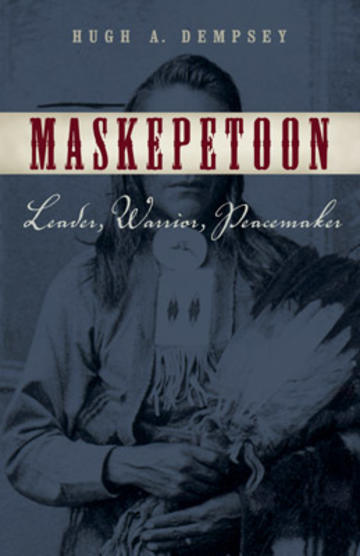 Enlarge Cover
Enlarge Cover
As a leader, Maskepetoon was respected for his skill as a hunter, his generosity and his wisdom. He was considered a “lucky” chief, a man who found buffalo on the edge of the plains, who avoided unnecessary conflicts with enemies, but protected his camp like a mother grizzly with her cubs. And in the turbulent mid-1800s, that’s exactly the kind of leader the Rocky Mountain Cree needed. Maskepetoon followed his own inclinations for peace and friendship. He formed allegiances with missionaries and guided settlers through the Rockies. Yet, if necessary, he could kill with impunity, rule with an iron hand and show no mercy where he believed none should be shown. He transformed his people from woodland trappers to buffalo hunters and from woodsmen to prairie dwellers, always keeping their interests at heart. Hugh Dempsey’s account of the legendary chief and his life includes insights from the Cree people of today, including descendants of Maskepetoon, and new information on the chief of the same name who lived in the United States during this time.
- Age:
- 14
- Grade:
- 9
Dempsey . . . has a novelist’s skill for storytelling. Here he has woven a fascinating tale of a little-known chief who was martyred for his pacifist beliefs. —Canada's History
Dempsey presents a detailed biography of Maskepetoon, the legendary chief of the Rocky Mountain Crees during the turbulent mid-1800s . . . Dempsey draws on 25 years of research putting this chief in his historical context and showing that great Native leaders enriched the history of the Canadian West. Dempsey recounts intertribal relations, Native relationships with the fur traders, missionaries and early settlers, and aboriginal life on the woodlands and prairies during a time when the buffalo herds were diminishing in great numbers. —BC Books for BC Schools
Buy this book at:
Annotations
Maskepetoon: Leader, Warrior, Peacemaker
Dempsey presents a detailed biography of Maskepetoon, the legendary chief of the Rocky Mountain Crees during the turbulent mid-1800s. Maskepetoon was born in 1807 in the Saskatchewan River area. He gained a reputation as a warrior and skilled hunter. During the 1840s he was influenced by Methodist missionaries and learned to read and write Cree syllabics. In time he became a strong proponent of peace. Dempsey draws on 25 years of research putting this chief in his historical context and showing that great Native leaders enriched the history of the Canadian West. Dempsey recounts intertribal relations, Native relationships with the fur traders, missionaries and early settlers, and aboriginal life on the woodlands and prairies during a time when the buffalo herds were diminishing in great numbers.
Source: The Association of Book Publishers of BC. Canadian Aboriginal Books for Schools. 2011-2012.
Maskepetoon: Leader, Warrior, Peacemaker
Dempsey presents a detailed biography of Maskepetoon, the legendary chief of the Rocky Mountain Crees during the turbulent mid-1800s. Maskepetoon was born in 1807 in the Saskatchewan River area. He gained a reputation as a warrior and skilled hunter. During the 1840s he was influenced by Methodist missionaries and learned to read and write Cree syllabics. In time he became a strong proponent of peace. Dempsey draws on 25 years of research putting this chief in his historical context and showing that great Native leaders enriched the history of the Canadian West. Dempsey recounts intertribal relations, Native relationships with the fur traders, missionaries and early settlers, and aboriginal life on the woodlands and prairies during a time when the buffalo herds were diminishing in great numbers.
Source: The Association of Book Publishers of BC. BC Books for BC Schools. 2011-2012.



